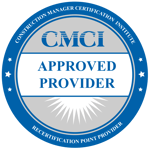Missed Deadlines
Staying on schedule is a challenge for every construction project, and the blame for delays can extend across the full project team. For example, when downstream contractors can’t understand or execute on a poorly written specification during construction, they issue an RFI, which can take days or weeks to resolve. The administrative tasks and added costs of excessive RFIs can become burdensome, compromising both the project timeline and budget.






